Introduction
Hey there, fellow rabbit owners and enthusiasts! Have you ever found yourself puzzled by your adorable furry friend’s mysterious shaking behavior?
As someone who has spent countless hours observing and decoding rabbit behavior, I’m here to shed some light on the intriguing world of rabbit shaking.
we’ll explore the various reasons behind rabbit shaking and look into what these movements might actually mean. Whether it’s shaking after eating, shaking to express happiness, or shaking as a response to fear, we’ll uncover the fascinating messages that our rabbits are trying to convey.
But before we dive into the specific moments of shaking, let’s first understand the basics of rabbit behavior. As rabbit owners, we know that these fluffy creatures have their unique ways of communicating.
During this journey, we’ll take a closer look at the different types of shaking and what they signify. Is your bunny shaking after a meal because of their natural digestive process?
We’ll uncover these possibilities and more, giving us a comprehensive understanding of why rabbits shake in various situations.
So, get ready to learn the secrets behind your furry friend’s shaking behavior. By the end of this article, you’ll have a deeper understanding of your rabbit’s unique communication style and be able to respond to their needs and emotions more effectively.
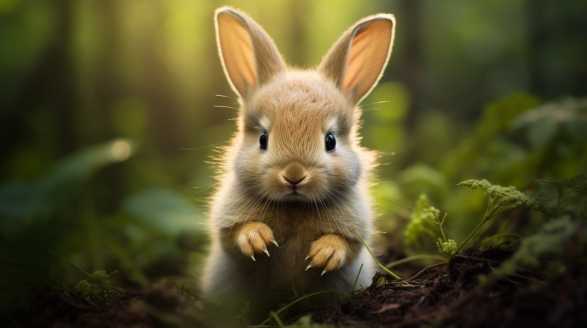
Key Takeaways
- Rabbits shake for various reasons, including as part of their natural digestive process, to relax their muscles, and to express satisfaction after a meal.
- The post-meal shake is a normal behavior for rabbits and should not be a cause for concern.
- Shaking can also be a form of communication and bonding between rabbits, as well as a displacement behavior in stressful or uncertain situations.
- Understanding rabbit body language, including shaking, can help us better communicate with and care for our furry friends.
- If you have any concerns about your rabbit’s shaking behavior, it’s always a good idea to consult a veterinarian.
Understanding Rabbit Vibrations: What Do They Mean?
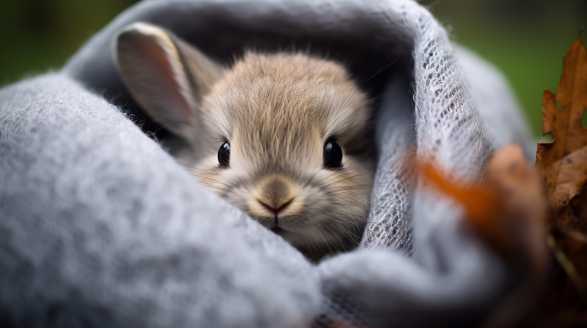
As a rabbit owner, I’ve often found myself intrigued by the various vibrations that my furry friend exhibits. These mysterious movements can be puzzling and sometimes leave me wondering what they really mean.
What Causes Rabbit Vibrations?
Before we begin decoding the meaning behind these vibrations, it’s important to understand what actually causes them. Rabbits have a unique way of communication, and vibrations are just one aspect of it.
- Purring: Similar to cats, rabbits can also purr when they are content and relaxed. This gentle vibrating sound often accompanies a state of tranquility.
- Tooth chattering: Rabbits have continuously growing teeth, and when they rub their teeth together, it creates a distinct vibrating noise. Tooth chattering can signify both pleasure and aggression, depending on the context.
- Grooming vibrations: When rabbits groom themselves or each other, they create vibrations as they lick and nibble their fur. These grooming vibrations indicate a sense of comfort and bonding.
- Thumping: Perhaps the most recognizable rabbit vibration is the thump. When a rabbit forcefully slams its hind legs onto the ground, it creates a strong vibration that can be heard throughout the room. Thumping is often a sign of warning or fear.
The Different Meanings of Rabbit Vibrations
Now that we know what causes rabbit vibrations, it’s time to explore their meanings. It’s important to note that each rabbit is unique, and their vibrations may vary depending on their personality and past experiences.
Purring Vibrations
Purring is a clear indication that your rabbit is content and at ease. It reflects a sense of satisfaction and comfort.
It may be the result of being petted or simply enjoying their surroundings.
Tooth Chattering Vibrations
Tooth chattering can be a bit more complex to decipher, as it can indicate either happiness or aggression:
- Happiness: When a rabbit lightly chatters its teeth, it is often a sign of contentment and pleasure. This can happen when you shower them with affection or during positive interactions with fellow rabbits.
- Aggression: On the other hand, tooth chattering can also occur when a rabbit feels threatened or agitated. It’s their way of warning other rabbits or even humans to back off. If you observe tooth chattering during interactions, it’s best to give your rabbit some space and try to understand the source of their discomfort.
Grooming Vibrations
Rabbits are meticulous groomers, and the vibrations generated during their grooming rituals are incredibly endearing. These vibrations serve multiple purposes:
- Comfort: When rabbits groom themselves or each other, it provides them with a soothing and calming experience. The vibrations created during grooming reflect their state of relaxation and contentment.
- Bonding: Mutual grooming among rabbits is a crucial part of their socialization process. By grooming each other, rabbits establish and reinforce their social bonds. Vibrations during grooming sessions communicate trust, friendship, and a sense of belonging.
Thumping Vibrations
Thumping is a distinctive rabbit behavior that often makes us sit up and take notice. These sudden vibrations can mean different things based on the context:
- Warning: Rabbits are naturally cautious creatures, and thumping can be a way for them to alert others to potential danger. They use their hind legs to produce a loud noise, coupled with vibrations, as a warning sign to their companions or predators.
- Fear: Thumping can also occur when a rabbit is frightened or startled. The vibrations allow them to communicate their fear to other rabbits, seeking safety and support.
Rabbit vibrations are an intriguing aspect of their communication repertoire. From purring to tooth chattering, grooming vibrations to thumping, each movement holds valuable insights into our furry friends’ emotional states.
So, the next time you witness your rabbit vibrating, take a moment to decode their message and strengthen the bond you share.
Do Rabbits Shake in Winter? Unveiling Seasonal Shaking Habits
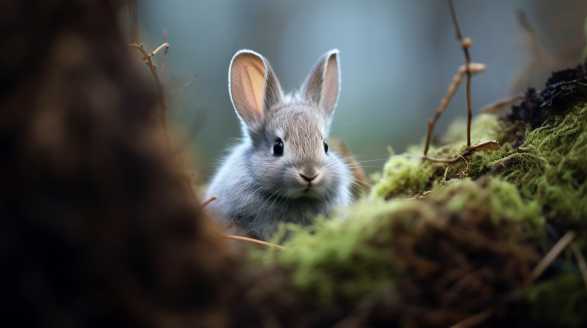
As an animal enthusiast and someone who has owned rabbits for several years, the question of whether rabbits shake in winter has always intrigued me. It’s a puzzling phenomenon that often leaves rabbit owners concerned and wondering about the wellbeing of their furry friends.
Understanding Rabbit Behavior
Before delving into the topic of rabbits shaking in winter, it’s important to understand their behavior in general. Rabbits are crepuscular animals, meaning they are most active during dawn and dusk.
During winter, their behavior and habits may change to adapt to the colder weather.
Common Misconceptions
Many people mistakenly believe that rabbits shake in winter due to feeling cold. However, this is not entirely accurate.
Often, other factors contribute to a rabbit’s shaking habits, which we will explore further.
Health Issues and Shaking
One of the main reasons why rabbits shake is due to health issues. If a rabbit is experiencing pain, discomfort, or illness, it may manifest as shaking or trembling.
Shaking as a Result of Fear or Anxiety
Another reason why rabbits may shake is due to fear or anxiety. Loud noises, sudden movements, or changes in their environment can startle rabbits and cause them to shake.
Environmental Factors
While rabbits are well-adapted to colder temperatures, extreme drops in temperature can cause discomfort and shaking. It’s important to provide proper shelter and bedding for rabbits during winter to keep them warm and protected.
Seasonal Changes and Hormonal Fluctuations
Rabbits are highly sensitive to changes in daylight hours and hormonal fluctuations. As winter approaches and daylight becomes shorter, rabbits may experience hormonal changes that can affect their behavior.
Recognizing Normal Rabbit Behaviors
To determine if a rabbit’s shaking is a cause for concern, it’s important to be able to distinguish normal behaviors from abnormal ones. Here are some common behaviors that are considered normal for rabbits:
- Grooming: Rabbits spend a significant amount of time grooming themselves, including shaking their fur to maintain cleanliness.
- Binkies: A binky is a joyful leap in the air that rabbits often do when they are happy and excited.
- Stretching: Like any other animal, rabbits need to stretch their muscles regularly, which can sometimes involve shaking.
If a rabbit’s shaking is accompanied by other unusual behaviors, such as loss of appetite, lethargy, or aggression, it may be necessary to consult a veterinarian to rule out any underlying health issues.
Providing Comfort and Support
As responsible rabbit owners, it is our duty to provide the best possible care and support to our furry companions. Here are some tips to ensure your rabbits are comfortable during the winter months:
- Proper shelter: Make sure your rabbits have a warm and insulated hutch or enclosure to protect them from the cold weather.
- Bedding: Provide plenty of soft bedding material, such as straw or hay, for your rabbits to burrow into and keep warm.
- Avoid drafts: Ensure that your rabbit’s living area is free from drafts or cold air leaks that can cause discomfort.
- Monitor temperature: Keep an eye on the ambient temperature in your rabbit’s living space and make adjustments accordingly.
By following these guidelines, you can help your rabbits stay happy and healthy throughout the winter season.
While rabbits may shake in certain situations, it is not primarily a behavior associated with winter. Instead, shaking in rabbits can be attributed to various factors such as health issues, fear or anxiety, or environmental discomfort.
Remember to monitor your rabbit’s behavior and consult with a veterinarian if you have any concerns about their shaking habits.
Shivering with Excitement: How Rabbits React to New Environments
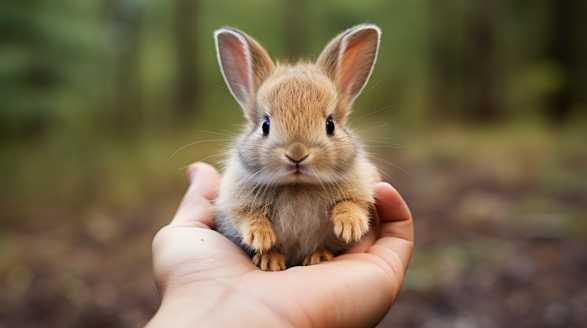
As a rabbit enthusiast, I have always been fascinated by how these adorable creatures interact with their surroundings. So, when it comes to new environments, I couldn’t help but wonder how rabbits react.
The Initial Encounter: An Unforgettable Moment
When a rabbit is introduced to a new environment, the first encounter is crucial. These fluffy creatures are naturally cautious, so it’s important to approach the situation with patience and understanding.
- Slow and Steady Wins the Race: Rabbits prefer gradual introductions. Allow them time to observe their surroundings from a safe distance before encouraging exploration.
- The Power of Scent: Rabbits have an excellent sense of smell. Introduce familiar scents, such as their preferred bedding, toys, or food, to create a reassuring environment.
- Safe Spaces: Provide hiding spots, like cozy hiding boxes or tunnels, to give rabbits a sense of security when they feel overwhelmed.
Rabbit Reactions: A Rollercoaster of Emotions
Once rabbits start exploring their novel environment, you may witness a range of reactions that showcase their unique personalities. Here are some common responses you might encounter:
- Curiosity Overload: Rabbits are naturally curious creatures. They will often hop around the new space, sniffing and investigating every nook and cranny. Be ready for their inquisitive nature to result in some unexpected and delightful discoveries.
- Playful Hops and Binkies: A happy rabbit may express its excitement by performing joyful hops, also known as “binkies.” This exuberant behavior involves leaping into the air and twisting their bodies in mid-air. Witnessing these playful binkies is a testament to how rabbits can quickly adapt and enjoy new environments.
- Wariness and Caution: Despite their natural curiosity, rabbits are prone to being cautious in unfamiliar territories. They might display a slightly timid behavior, moving gingerly and continually assessing their surroundings for potential threats. This is their way of ensuring safety and adjusting to the unfamiliar.
- Freezing in their Tracks: Some rabbits, particularly those who are more sensitive or shy, may freeze when encountering a new environment. This reaction resembles a statue-like pose with a heightened alertness. Give them time and support to overcome their initial fear and gain confidence in their new surroundings.
Adapting and Marking Territory
As rabbits become more comfortable and settle into their new environment, they embark on a fascinating journey of adapting and marking their territory. This instinctual behavior plays a crucial role in their overall well-being.
- Exploring Every Corner: Rabbits have an innate need to explore their environment thoroughly. They will happily investigate every corner, underneath furniture, and even squeeze into tight spaces to mark their presence. Be prepared to discover your rabbit’s favorite hidden spots!
- Chinning: A Sign of Ownership: Rabbits have scent glands under their chin that release pheromones when they rub their chin against objects. This behavior, known as chinning, serves as a way for rabbits to mark their territory and claim ownership.
- Digging for Comfort: Rabbits also have a natural inclination to dig. While this trait may require some rabbit-proofing measures, providing a designated digging area with suitable materials, such as hay or a digging box, can fulfill this instinct and add an extra layer of enjoyment to their new environment.
Helping Your Rabbit Navigate the Transition
As responsible rabbit owners, it’s our duty to ensure a smooth transition into a new environment. Here are some practical tips to help your rabbit feel at ease during this exciting time:
- A Familiar Ambience: To ease the transition, recreate a familiar ambience by using their favorite litter box, toys, and even their old bedding. Familiar scents go a long way in comforting your rabbit.
- Stick to a Routine: Rabbits thrive on routine. Maintain consistency in feeding times, playtime, and bedtime rituals. This stability will provide a sense of security and help them quickly acclimate to the new environment.
- TLC: Time, Love, and Care: Shower your rabbit with plenty of TLC during this transitional period. Spend quality time together, engage in play sessions, and offer gentle words of reassurance. Building a strong bond will contribute to their overall happiness and ease their adjustment.
Watching rabbits react to new environments is a joyous experience. From their initial cautious observations to their exhilarating binkies, rabbits demonstrate a remarkable ability to adapt and embrace unfamiliar territories.
By following these tips and understanding their reactions, you can provide your furry friend with the best environment possible, ensuring their happiness and well-being in their new home. So, go ahead and embark on this adventure with your rabbit – shivering with excitement together!
Shaking and Happiness: Decoding Joyful Bunny Behavior
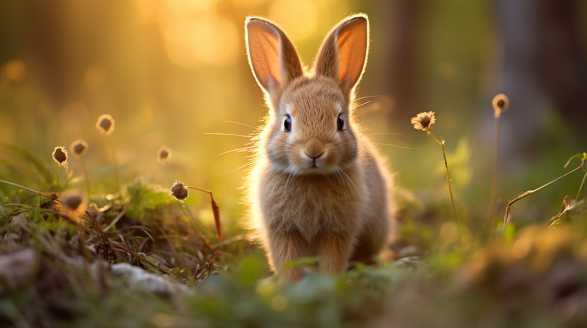
Have you ever wondered why bunnies shake? Does it mean they are happy or scared?
we will look into the fascinating world of bunny body language, focusing specifically on shaking and its connection to happiness. So, let’s jump right in!
Understanding Bunny Body Language
Bunnies, just like humans, have their own way of communicating. While they cannot speak, they rely heavily on their body language to convey their emotions and intentions.
The Bunny Shake: Demystifying the Phenomenon
The Joyful Bunny Shake
One of the most captivating bunny behaviors is the delightful shake they often perform when in a state of happiness. It is a quick and distinctive movement that can be observed in various contexts.
- After a delicious meal
- During playtime with fellow bunnies
- When receiving gentle pets and cuddles
- Upon discovering a favorite treat
Shaking as an Expression of Excitement
When a bunny shakes, it usually signifies a moment of excitement or anticipation. They are simply overwhelmed with joy and cannot contain their delight.
Shaking to Release Energy
Bunnies are known for their high levels of energy, and shaking is one way they release it. This instinctive behavior allows them to let off steam and stay balanced emotionally.
Shaking as a Sign of Contentment
Aside from expressing excitement, bunnies also shake as a sign of contentment. It is their way of demonstrating that they are completely at ease and enjoying the present moment.
Interpreting Bunny Behavior: Tips and Tricks
Now that we understand the connection between shaking and bunny happiness, let’s explore some additional bunny behaviors and how they contribute to decoding their emotions.
Bunny Hop: A Leap of Joy
Bunny hopping is another joyful behavior frequently observed among these fluffy creatures. A bunny hop is a sudden and rapid jump that often indicates excitement and happiness.
Flopping: A Sign of Utter Relaxation
When a bunny flops, it’s a beautiful sight to behold. Flopping refers to a bunny completely stretching out and lying flat on their side.
Witnessing a bunny flop is a clear indication that they are feeling safe and content in their surroundings.
Binkying: An Expression of Boundless Joy
Binkying is a term used to describe a specific kind of bunny behavior that is almost synonymous with happiness. It involves a series of twists, kicks, and jumps while simultaneously darting sideways or backward.
Teeth Purring: A Melodious Symptom of Contentment
Tooth purring, also known as tooth grinding, is a soft, rhythmic sound made by bunnies when they are feeling secure and content. It is usually accompanied by a relaxed posture and closed eyes, indicating a state of complete relaxation.
Nose Bonks: Bunny Love and Affection
Bunnies are incredibly affectionate creatures, and one way they express their love is through nose bonks. These gentle taps with their noses are bunny kisses and can be seen when bunnies are bonding closely with their human companions or fellow bunnies.
The shaking behavior of bunnies is an intriguing aspect of their overall communication system. It symbolizes happiness, excitement, and contentment.
So, the next time you see your bunny shaking with joy, be assured that they are experiencing a moment of pure bliss. Cherish these special moments and continue to provide them with a loving and enriching environment.
Remember, bunnies have their own unique way of expressing happiness, and it’s up to us to listen, observe, and respond accordingly. Happy bunny-watching!
Rabbit Shaking: Fright or Flight Response?
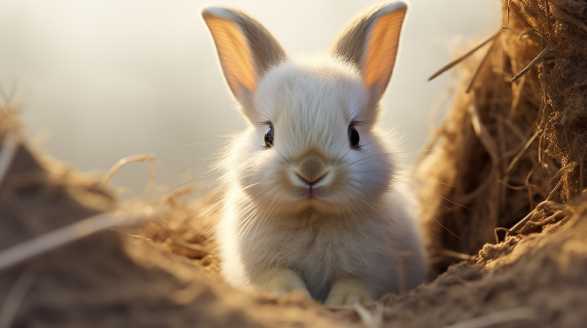
As a proud rabbit owner, I’ve always been fascinated by their behavior. One particular behavior that has caught my attention is when a rabbit starts shaking.
Join me as I look into the world of rabbit shaking and explore the mysteries behind this intriguing behavior.
Understanding Rabbit Behavior
Before we dive into the specifics of rabbit shaking, it’s important to understand a bit about their behavior in general. Rabbits are prey animals, which means they are naturally cautious and on the lookout for potential threats.
The Fright Response
Rabbits have an innate fright response, which helps them survive in the wild. When they sense a potential threat, their bodies automatically go into overdrive, preparing for fight or flight.
Shaking as a Sign of Fear
When a rabbit feels scared or threatened, it may start shaking as a physical response. This shaking can occur in various parts of their body, such as their legs, head, or even their entire body.
Intensity of Shaking
The intensity of shaking can vary from rabbit to rabbit. Some may exhibit mild tremors, while others may shake more vigorously.
Other Fearful Behaviors
Shaking is often accompanied by other fearful behaviors in rabbits. These may include freezing in place, running away, thumping their hind legs, or even hiding.
The Flight Response
While shaking is commonly associated with fear, it can also be a part of the flight response in rabbits.
Preparing for a Quick Escape
Rabbits are remarkable escape artists, and when they feel threatened, their flight response kicks in. Shaking can be a way for them to prepare their muscles for a quick getaway.
Building Up Adrenaline
In addition to preparing their muscles, shaking may also be a result of the release of adrenaline in rabbits. Adrenaline helps increase their heart rate and blood flow, enabling them to react swiftly to danger.
Other Possible Explanations
While fear and flight responses are the primary reasons for rabbit shaking, there are a few other factors to consider.
Cold or Chills
Rabbits are sensitive to changes in temperature, and if they are feeling cold or experiencing chills, they may start shaking to generate body heat. Just like humans, rabbits can shiver when they’re cold.
Pain or Discomfort
In some cases, shaking in rabbits can be a sign of pain or discomfort. If a rabbit is injured, sick, or experiencing any physical discomfort, shaking may be a way for them to cope with the pain or express discomfort.
When to Be Concerned
While it’s normal for rabbits to shake occasionally, it’s essential to be aware of any sudden or drastic changes in their behavior. If your rabbit is shaking excessively, without any obvious trigger, it may indicate an underlying health issue or high stress levels.
Consulting a Veterinarian
If you’re unsure about your rabbit’s shaking behavior or if it’s causing you significant concern, it’s always a good idea to consult a veterinarian. They can assess your rabbit’s overall health and provide guidance on how to address any underlying issues.
Rabbit shaking is a fascinating behavior that can be attributed to their fear or flight response. When faced with potential threats, rabbits may shake to release tension and prepare for action.
While it’s primarily associated with fear, there are other factors like cold, pain, or discomfort that can also contribute to shaking in rabbits. As responsible rabbit owners, it’s important for us to be observant of our pets’ behavior and seek professional advice if we have any concerns.
Shake and Communicate: An In-Depth Look at Rabbit Body Language
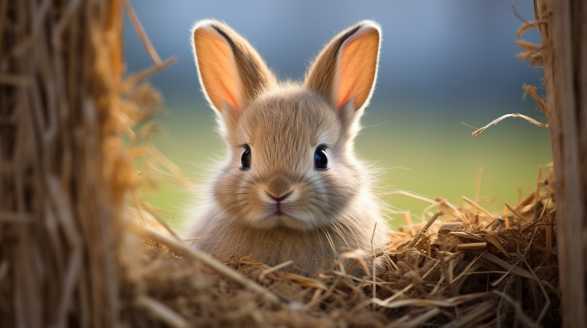
As a passionate rabbit owner, I have always been captivated by the unique ways these fluffy creatures communicate. Their body language is fascinating and, at times, complex.
So, grab your favorite bunny companion and join me on this enlightening journey!
Understanding Rabbit Shaking
Why Do Rabbits Shake?
Rabbits shake for a multitude of reasons, each conveying a distinct message. Here are some common motives behind their shaking:
- Shaking off excess energy: Much like dogs, rabbits can shake to rid themselves of pent-up energy. You might notice your bunny shaking after playtime or when they feel particularly excitable.
- Grooming: Rabbits are meticulous groomers. They often shake to realign their fur and remove loose hair and debris. This behavior is especially common after a grooming session or a thorough self-cleaning session.
- Scare or fright: When rabbits feel threatened or scared, they might shake as a form of defense mechanism. This involuntary shaking can be a sign that your bunny is frightened or anxious.
- Temperature regulation: Rabbits are highly sensitive to changes in temperature. If they feel excessively warm or cold, they may shake to adjust their body temperature.
Types of Rabbit Shakes and Their Meanings
Rabbit shaking can manifest in different ways, each carrying a separate meaning. Let’s explore the various types of shakes you may encounter:
The Binkying Shake
Binkying is an adorable behavior peculiar to rabbits. It involves leaping into the air while twisting and contorting the body.
When your rabbit performs a binky, it’s a clear sign that they are feeling content and delighted.
The Grooming Shake
Rabbits possess fastidious grooming habits. After a grooming session, they may shake their body to ensure every strand of fur is back in place.
The Fear Shake
When a rabbit feels threatened or senses danger, they may perform a fear shake. This shake is more pronounced and rapid than the previous types.
Pay attention to other body language cues such as flattened ears and a tense body, which may accompany this type of shake.
The Temperature Regulation Shake
Rabbits have a preference for moderate temperatures. Consequently, if they feel too hot or too cold, they will shake to regulate their body temperature.
Signs of Rabbit Body Language
Understanding a rabbit’s body language is crucial for effective communication. Here are some common signs to watch out for:
Ears
Rabbit ears are highly expressive and offer valuable insight into their moods:
- Erect ears: When your rabbit’s ears are upright, it indicates that they are alert and interested in their surroundings.
- Laid-back ears: Relaxed rabbits often showcase laid-back ears. It shows that they feel comfortable and at ease.
- Flattened ears: Ears pressed firmly against the head are a sign of fear or aggression. Be cautious and avoid approaching your bunny if their ears are flattened.
Eyes
Rabbit eyes convey a wealth of information about their emotions:
- Wide open and alert: A rabbit with wide-open eyes is curious and engaged.
- Half-closed eyes: This indicates contentment and relaxation. When your bunny is in a state of bliss, their eyes may appear half-closed.
- Narrowed or squinting eyes: Squinting eyes can signify either aggression or discomfort. Assess the situation and your rabbit’s accompanying body language to determine the appropriate response.
Body Posture
Pay attention to your rabbit’s body positioning as it speaks volumes:
- Relaxed posture: A bunny with a relaxed body posture, lying down with their legs stretched out, indicates contentment.
- Tensed or hunched body: A hunched or tense body posture suggests anxiety, fear, or aggression. It may be best to give your rabbit some space and observe carefully for any threats causing this reaction.
Tail Movement
While not as expressive as ears or eyes, a rabbit’s tail can still provide valuable clues:
- Upright tail: An upright tail signifies alertness and curiosity. It’s a good sign that your rabbit is just exploring their environment.
- Tail tuck or tightly held against the body: A tucked or tightly held tail suggests fear or anxiety. Your bunny might be feeling threatened and seeking protection.
- Tail thumping: When a rabbit sits upright and rapidly thumps its tail, it’s a warning sign. This behavior is usually displayed when your bunny senses danger or perceives a threat nearby.
Rabbit body language is a beautiful and intricate means of communication. By paying attention to your furry friend’s shakes, ears, eyes, body posture, and tail movement, you can better understand their emotions and needs.
Your bond with your bunny will deepen, leading to a more enriching and rewarding companionship.
Why Do Rabbits Shake after Eating? Unveiling the Mystery
As a curious rabbit enthusiast, I have often wondered why rabbits shake after eating. It’s a peculiar behavior that has left me perplexed for quite some time.
I will share with you everything I’ve learned about why rabbits shake after eating.
Understanding the Basics of Rabbit Behavior
Before delving into the reasons behind this peculiar behavior, it’s important to understand some basic rabbit behavior. Rabbits are fascinating creatures with unique behaviors that can sometimes leave us humans scratching our heads in confusion.
The Shake after Eating Phenomenon
When rabbits finish a meal, they often engage in a behavior commonly known as the “post-meal shake.” This behavior refers to a rapid shaking or vibrating movement that rabbits exhibit immediately after eating.
The post-meal shake is actually a natural and perfectly normal behavior for rabbits.
So, why do rabbits shake after eating? Let’s explore some possible explanations:
1. Natural Digestive Process
One theory suggests that the post-meal shake is merely part of a rabbit’s natural digestive process. Rabbits have a unique digestive system that requires them to eat their food twice.
After consuming their food, rabbits have a special chamber in their digestive tract called the cecum. The cecum allows them to ferment their food before re-ingesting it.
The rapid shaking motion after a meal may help facilitate the movement of food through the digestive tract, aiding in the fermentation process. Think of it as a way for rabbits to “stir things up” internally and keep their digestive system functioning smoothly.
2. Muscle Relaxation
Another possible explanation for the post-meal shake is related to muscle relaxation. Eating is an energy-consuming activity for rabbits, and the rapid shaking afterward may be a way for them to relax their muscles and release any tension built up during the meal.
Just like humans may stretch or shake their limbs after a long day, rabbits might use the post-meal shake as a way to unwind and relieve any muscle strain. It’s their version of a little post-meal exercise routine!
3. A Sense of Satisfaction
Rabbits are creatures of habit, and the post-meal shake may serve as a ritualistic behavior associated with their sense of satisfaction. After a satisfying meal, the shake could be their way of expressing contentment and satisfaction.
Similar to how we might pat our bellies after a delicious meal, rabbits might shake as a way of communicating their physical and emotional well-being. It’s their version of a joyful celebration!
4. Bonding and Social Interaction
Rabbits are social animals that thrive on companionship. The post-meal shake may have a social aspect to it as well.
By shaking after a meal, rabbits may be signaling to others in their group that they have finished eating or that it’s time to move on. It could serve as a way of reinforcing social bonds and ensuring the cohesion of the group.
5. Displacement Behavior
Sometimes, rabbits may exhibit the post-meal shake as a displacement behavior. Displacement behaviors are actions that animals display when they are conflicted or experiencing conflicting emotions.
For example, if a rabbit feels unsure about its environment or senses a potential threat while eating, it may shake as a way to cope with the conflicting feelings of hunger and anxiety. It’s their way of finding balance amidst uncertainty.
There you have it – a comprehensive exploration of why rabbits shake after eating. While the exact reason behind this behavior may be multifaceted and not fully understood, it’s clear that the post-meal shake is a natural and normal part of a rabbit’s behavior.
As rabbit enthusiasts, we should embrace and appreciate the quirks of these delightful creatures. So, the next time you see your bunny shaking after a meal, remember that it’s just their way of keeping their digestion on track, relaxing their muscles, expressing satisfaction, bonding with their group, or coping with conflicting emotions.
Conclusion
To conclude, understanding rabbit shaking behavior is a key aspect of being a responsible rabbit owner. Throughout this article, I’ve explored the different reasons why rabbits shake and what these movements might actually mean.
It’s important to remember that each rabbit is an individual with their own personality and experiences, so their shaking behavior may vary. However, by observing their body language and taking note of their specific shaking patterns, we can gain valuable insights into their well-being.
The post-meal shake is a normal behavior for rabbits and should not be a cause for concern. It is part of their natural digestive process and helps keep their digestive system running smoothly.
Shaking can also be a form of communication and bonding between rabbits. Whether it’s shaking to express happiness during playtime, or shaking as a displacement behavior in stressful situations, understanding the meaning behind their movements allows us to respond appropriately and provide the necessary support.
By being attentive to our rabbits and their body language, we can deepen our bond with them and ensure their overall well-being. If you have any concerns about your rabbit’s shaking behavior, it’s always a good idea to consult a veterinarian for further guidance.
In conclusion, rabbit shaking is a fascinating behavior that holds valuable insights into their needs and emotions. By decoding their unique shaking patterns and paying attention to their body language, we can better understand and care for our furry friends.
Frequently Asked Questions
What do rabbits shake?
Rabbits shake for various reasons. Some common reasons include:
- Shivering: Rabbits may shake when they are cold or experiencing a drop in body temperature. Provide them with a warm environment to prevent shivering.
- Fear or Stress: If a rabbit feels threatened or scared, it may shake as a natural response to fear. Try to identify the source of stress and remove it from the rabbit’s environment.
- Nervousness: Some rabbits may shake when they are anxious or nervous. This can occur in new environments, during loud noises, or when meeting new people. Give your rabbit time to adjust and provide a calm atmosphere.
- Medical Issues: In some cases, shaking can be a symptom of an underlying health problem. If your rabbit shows persistent shaking or displays other signs of illness, it’s important to consult a veterinarian.
How can I keep my rabbit warm and prevent shaking?
To keep your rabbit warm and prevent shaking, you can:
- Provide Adequate Bedding: Line the enclosure with suitable bedding materials such as hay, straw, or shredded paper to provide insulation.
- Use Heating Pads: Place a heating pad or a warmed pet-safe bottle wrapped in a cloth in the rabbit’s enclosure to create a warm spot for them.
- Ensure a Draft-Free Space: Keep the rabbit’s enclosure away from drafty areas and provide a sheltered space for them.
- Consider Sweaters or Jackets: In extremely cold temperatures, you can dress your rabbit in a specially made rabbit sweater or jacket for added warmth.
How can I identify if my rabbit is scared or stressed?
You can identify if your rabbit is scared or stressed by observing the following behaviors:
- Shaking: Shaking can be a sign of fear or stress in rabbits.
- Hiding: Rabbits may retreat to hiding spots, such as burrowing under bedding or hiding in tunnels, when they feel scared or stressed.
- Aggression or Thumping: Some rabbits may display aggressive behavior or thump their hind legs on the ground when they are scared or stressed.
- Decreased Appetite: A stressed or scared rabbit may eat less food or show a decreased interest in eating.
When should I be concerned about my rabbit’s shaking?
If your rabbit’s shaking persists or if they display other concerning symptoms, it is important to consult a veterinarian. Some signs that should raise concern include:
- Frequent or Persistent Shaking: If your rabbit is shaking frequently or for prolonged periods, it may indicate an underlying health issue.
- Other Physical Symptoms: If your rabbit shows additional signs of illness, such as lack of appetite, lethargy, discharge from the eyes or nose, or difficulty breathing, seek immediate veterinary attention.
Can shaking be a normal behavior in rabbits?
Shaking can be a normal behavior in rabbits in certain situations, such as:
- Grooming: Rabbits may shake their bodies as a part of their grooming routine, especially after grooming their faces or ears.
- Playfulness: Some rabbits may engage in playful behavior that includes shaking their bodies.
However, it is essential to differentiate between normal and concerning shaking behavior. If you are unsure, it is best to consult a veterinarian to ensure your rabbit’s well-being.
What should I do if I suspect my rabbit is shaking due to a health problem?
If you suspect that your rabbit’s shaking is due to a health problem, you should:
- Consult a Veterinarian: Seek professional advice from a veterinarian experienced in rabbit care.
- Provide Details: Inform the veterinarian about the frequency, duration, and any accompanying symptoms of the shaking.
- Follow the Recommended Course of Action: Depending on the diagnosis, the veterinarian may recommend specific treatment or further examinations for your rabbit.
Are there any preventive measures to reduce rabbit shaking?
While some shaking can be normal, you can take preventive measures to reduce rabbit shaking:
- Proper Handling: Handle your rabbit gently and calmly to minimize stress or fear responses.
- Adequate Socialization: Socialize your rabbit from a young age, exposing them to different environments, people, and experiences to reduce anxiety levels.
- Regular Check-ups: Schedule regular visits to a rabbit-savvy veterinarian for routine check-ups and preventive care.
- Maintain a Calm Environment: Provide a peaceful and quiet environment for your rabbit, free from loud noises and disturbances.
By implementing these measures, you can help ensure your rabbit’s well-being and reduce the likelihood of shaking episodes.
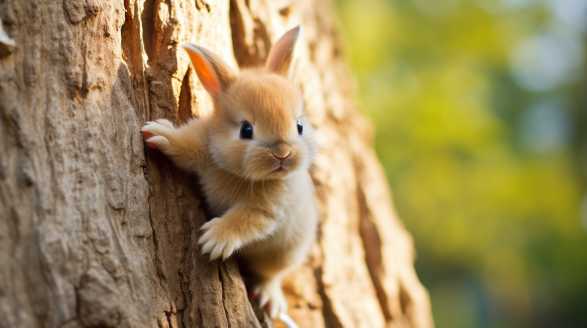
Can Rabbits Climb
Introduction Can rabbits climb? Let’s find out. Trust me, you won’t want to miss this! As a self-proclaimed rabbit enthusiast and owner of not just one, but multiple pet rabbits, I can honestly say that these furballs of cuteness have a secret side that will blow your mind. Today, we’re delving into the age-old question: […]
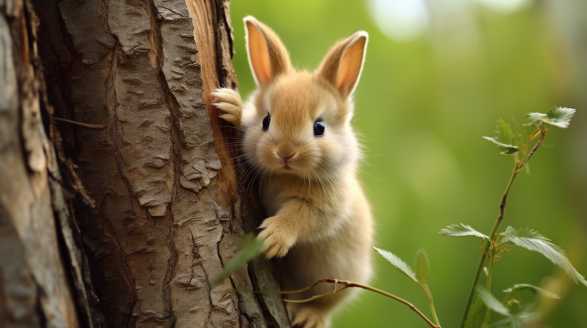
Can Rabbits Climb Trees
Introduction Are you curious to know whether rabbits can climb trees? Well, you’re in for a treat! It’s a question that has puzzled many and sparked intriguing debates among animal enthusiasts. So, let’s embark on a journey together to uncover the truth about these furry creatures and their abilities in the treetops. You might be […]
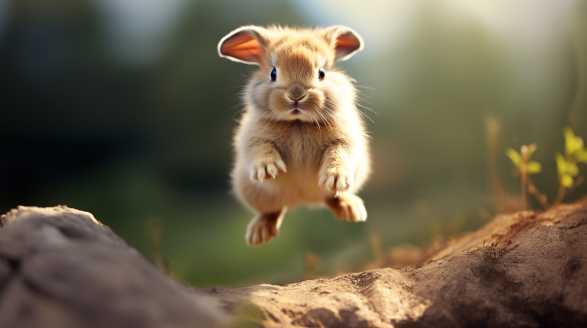
How High Can Rabbits Jump
Introduction How high can rabbits jump? Let’s find out. Picture this: you’re strolling through a meadow, enjoying the sunny day, when suddenly, out of nowhere, a rabbit takes off into the sky, reaching heights you never thought possible. It’s like watching a real-life superhero in action! What makes rabbits such incredible jumpers? Hold onto your […]
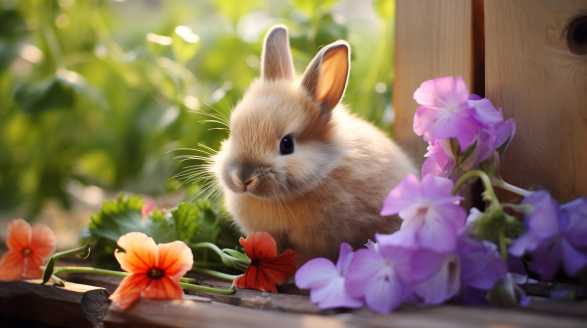
Do Rabbits Eat Petunias
Introduction Do rabbits eat petunias? Let’s find out. The rabbit’s taste preferences have always been a perplexing mystery, especially when it comes to petunias. Are these vibrant blossoms a delightful treat for them, or are they simply bypassed in favor of other nibbles? we’re going on a thrilling rabbit quest, decoding their selective palate and […]
